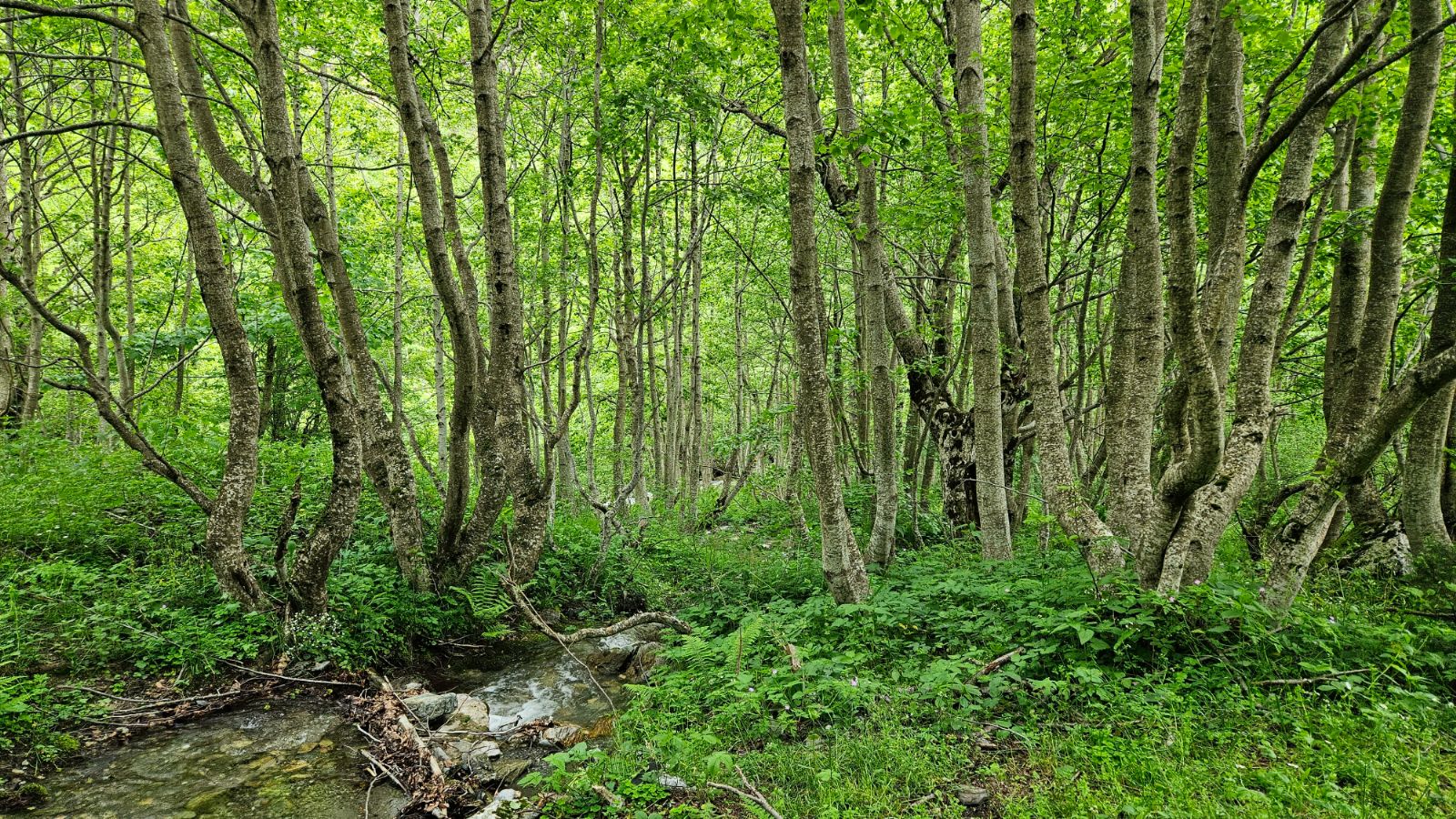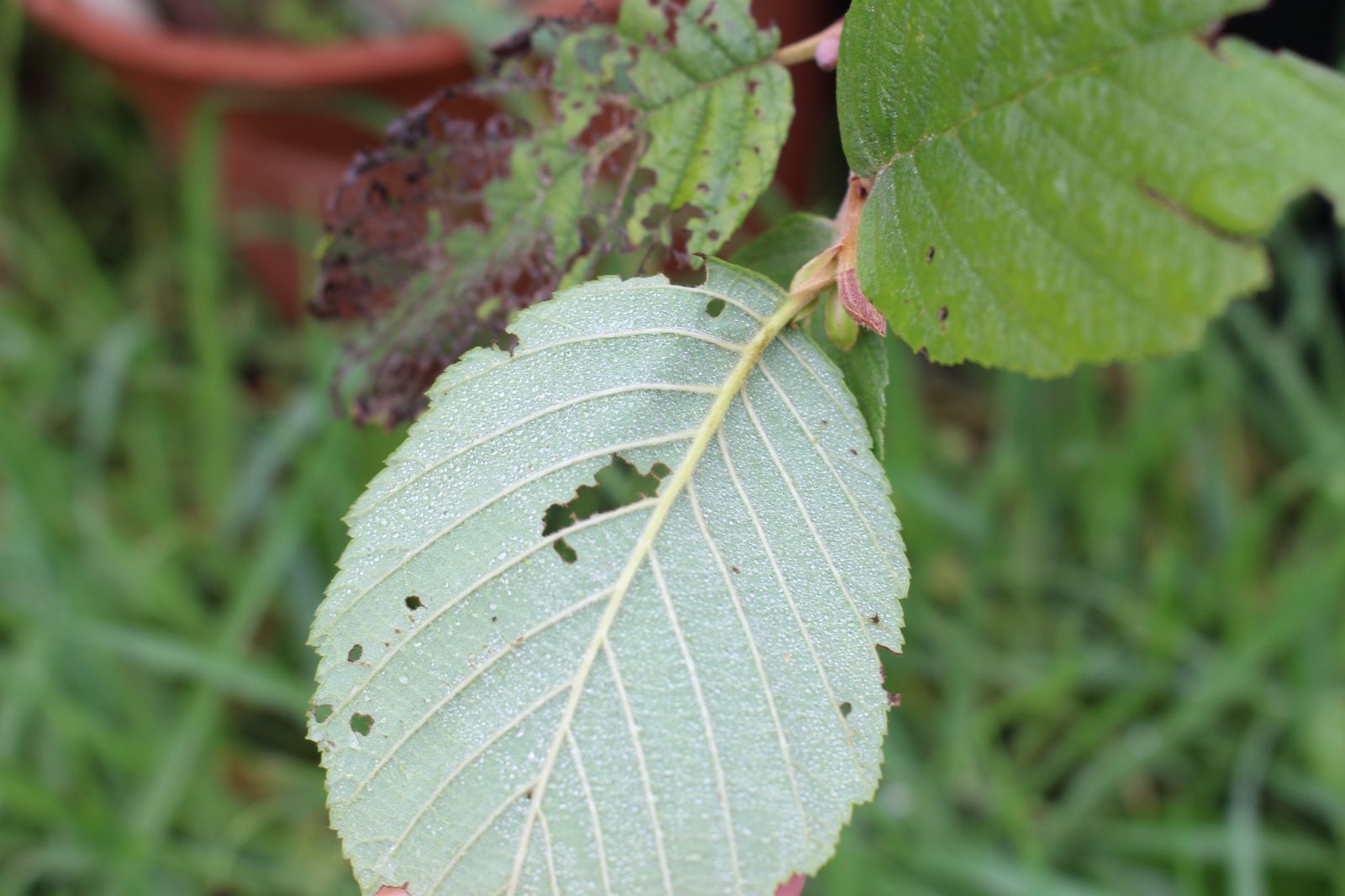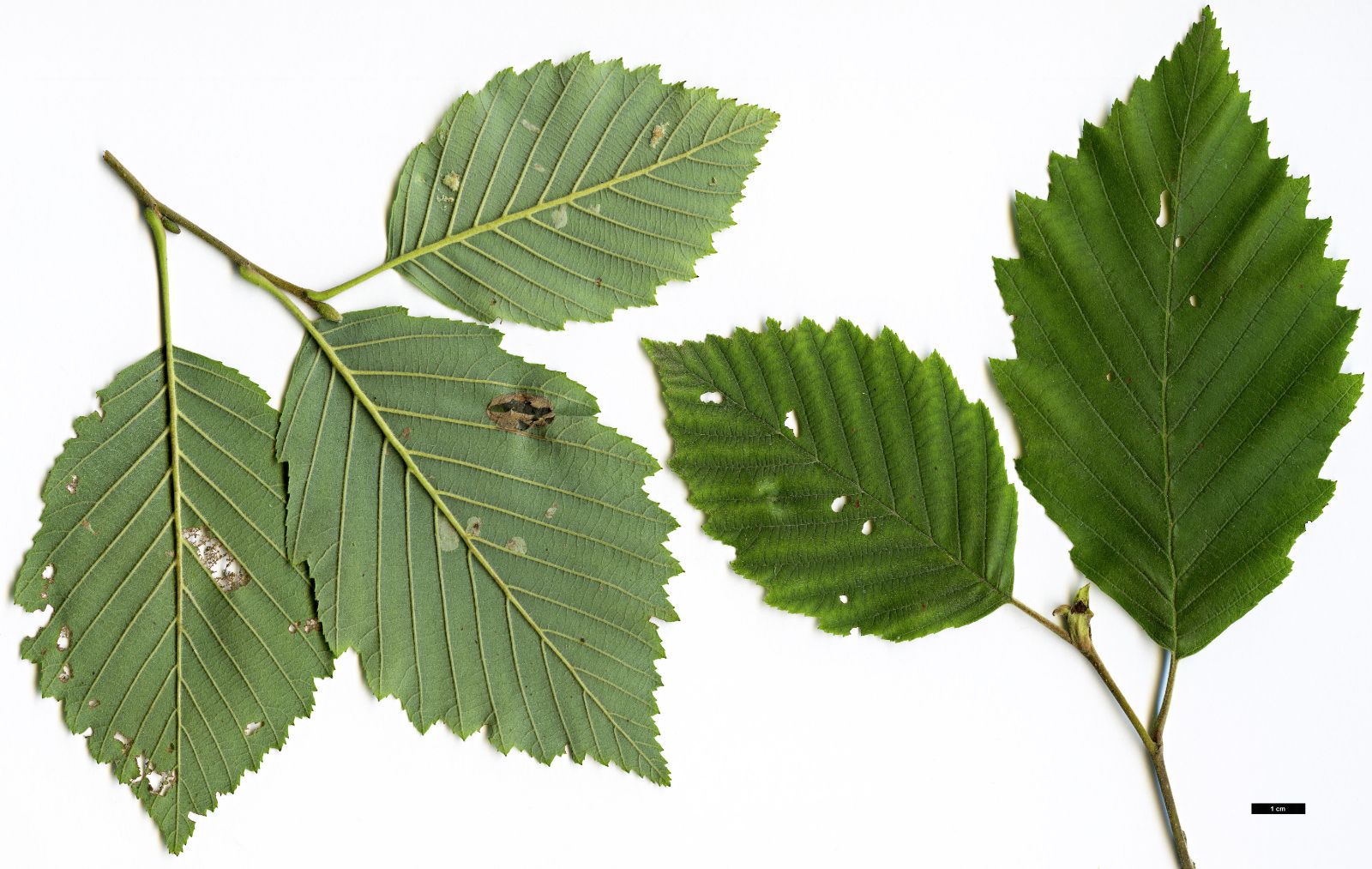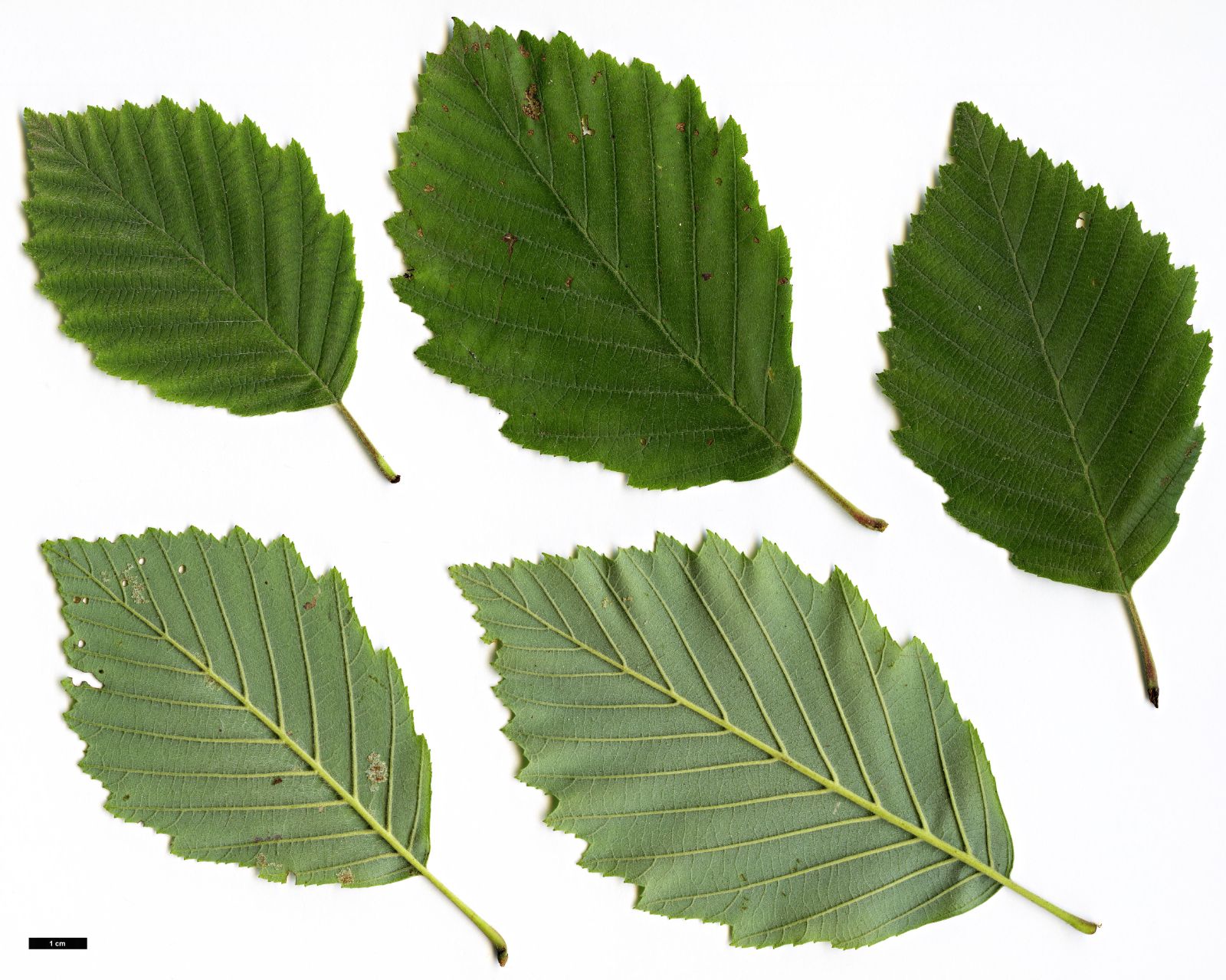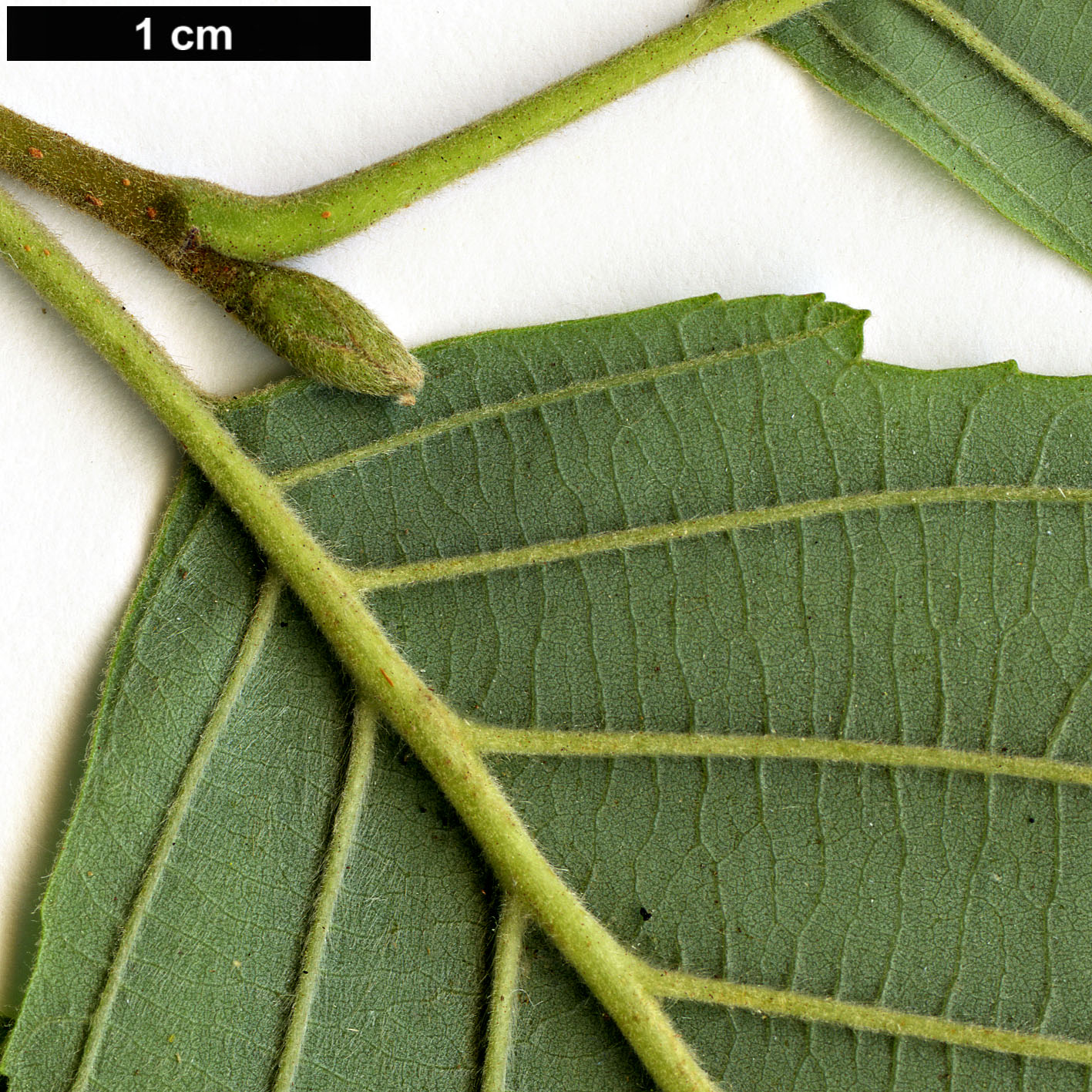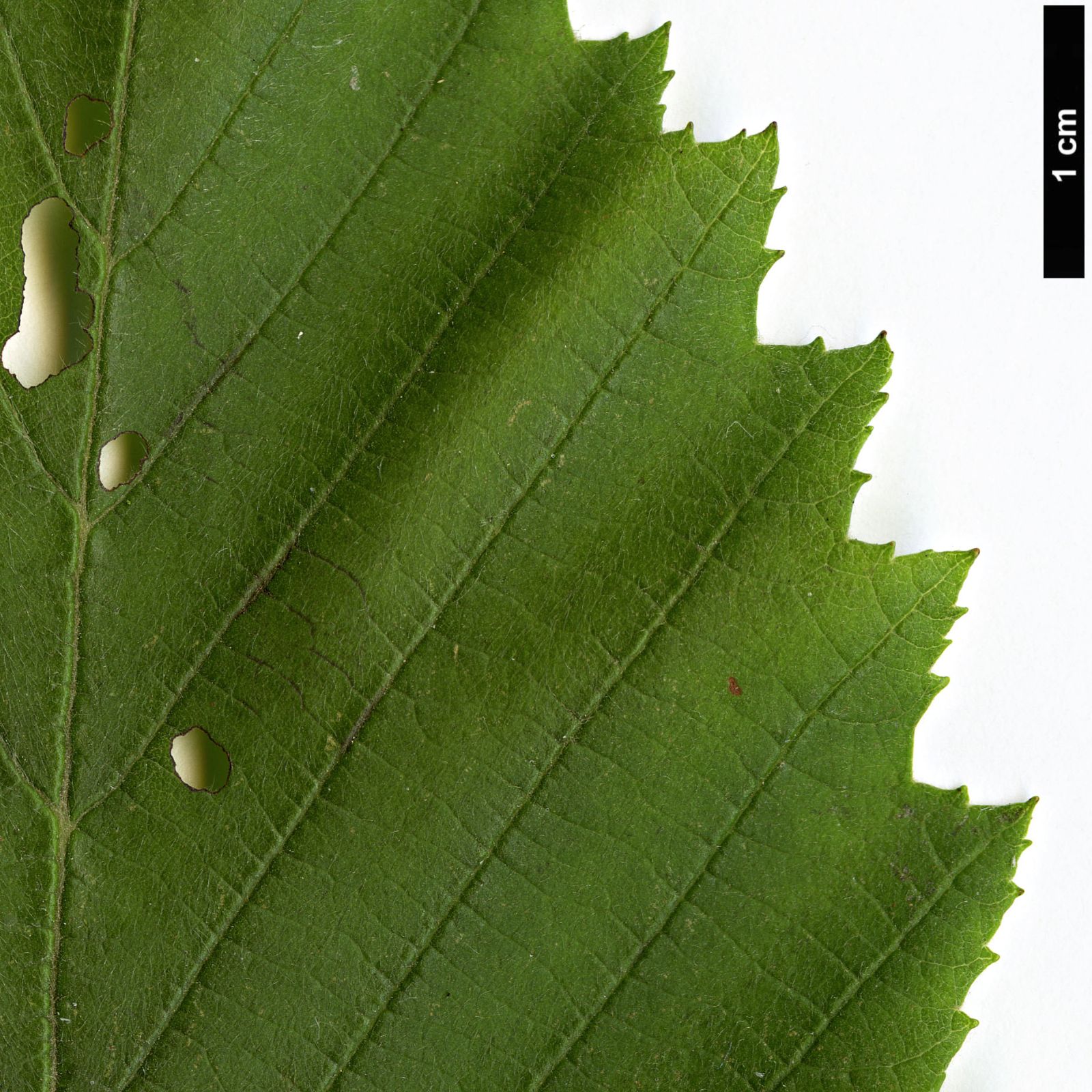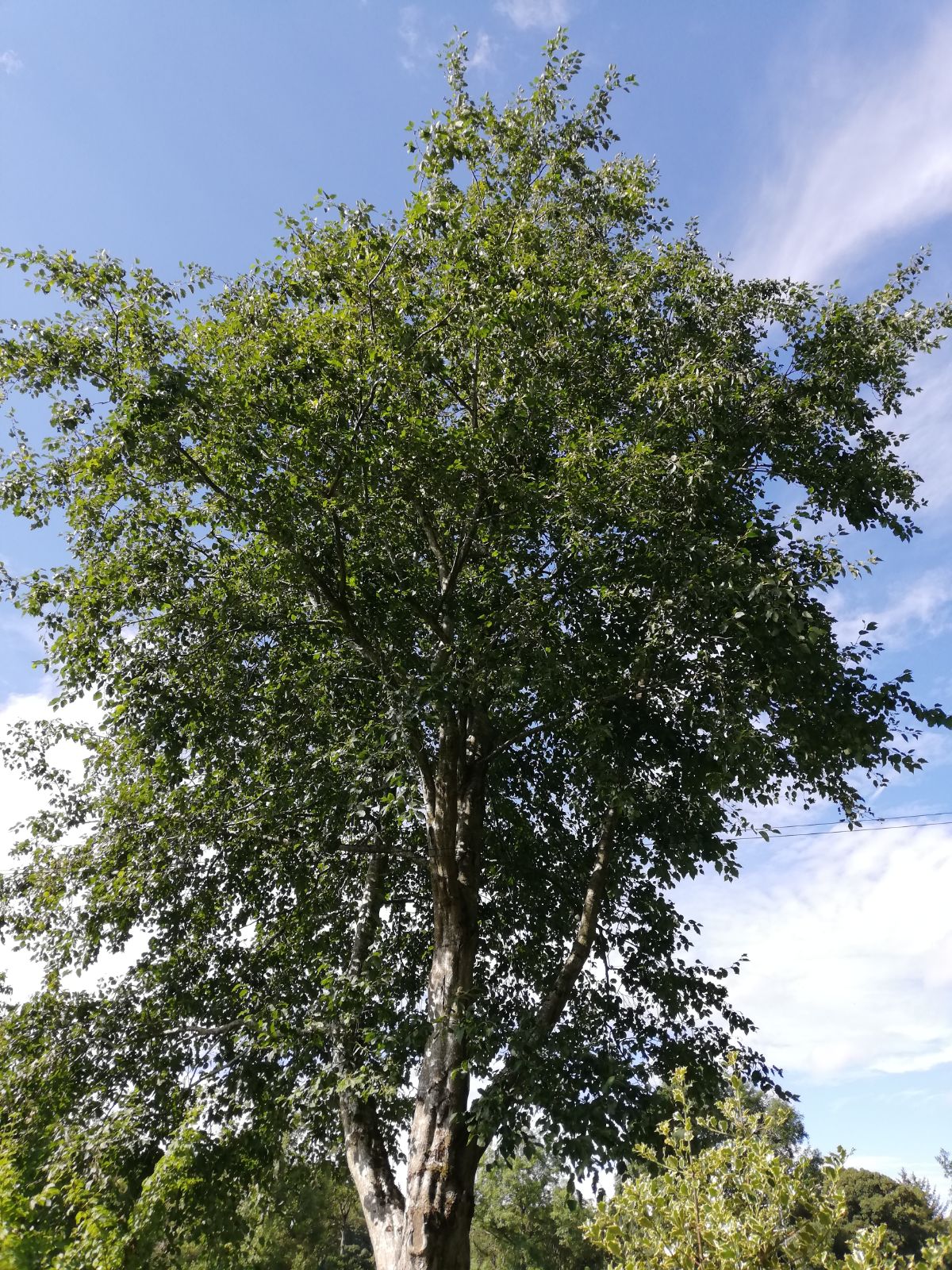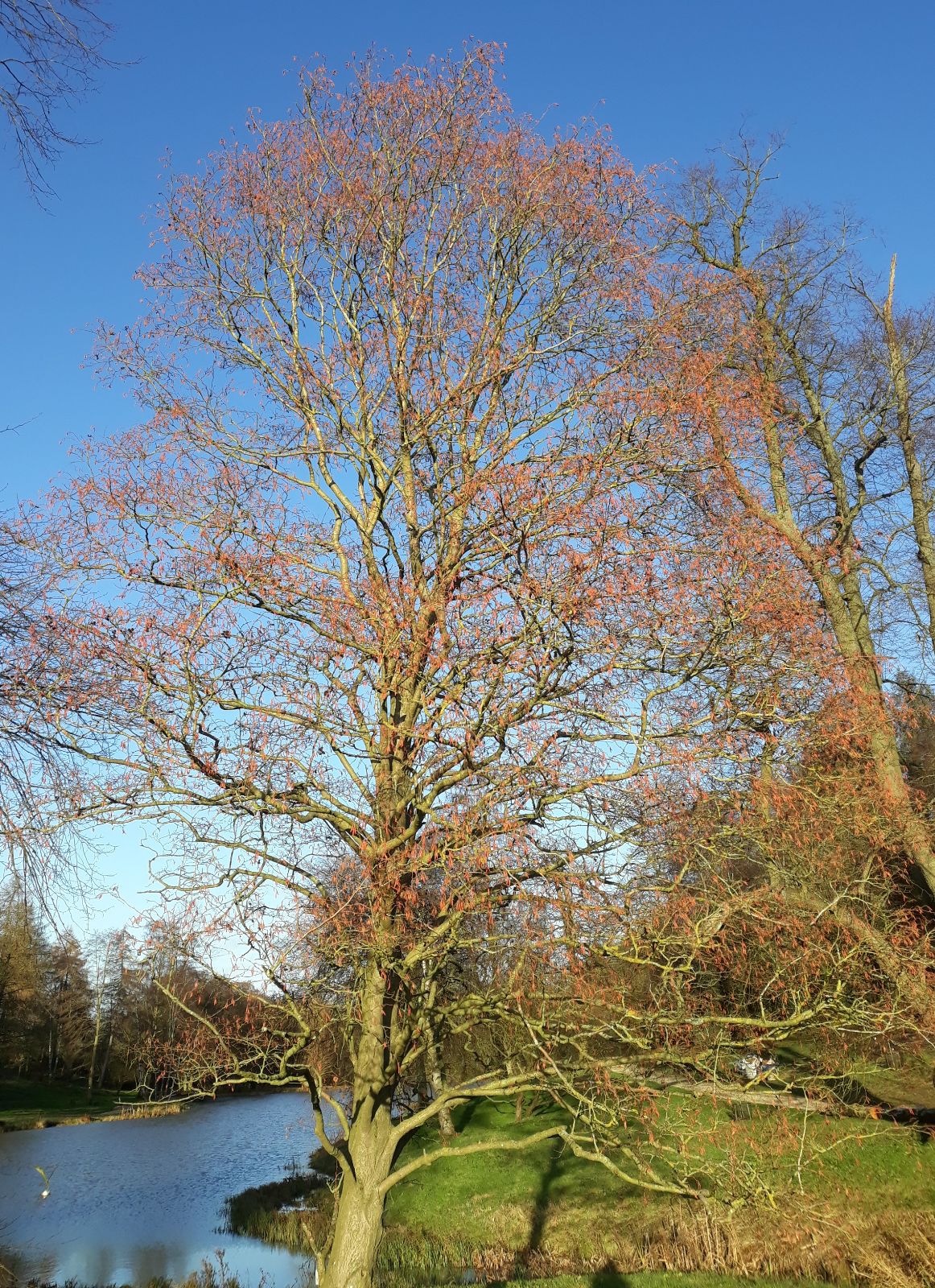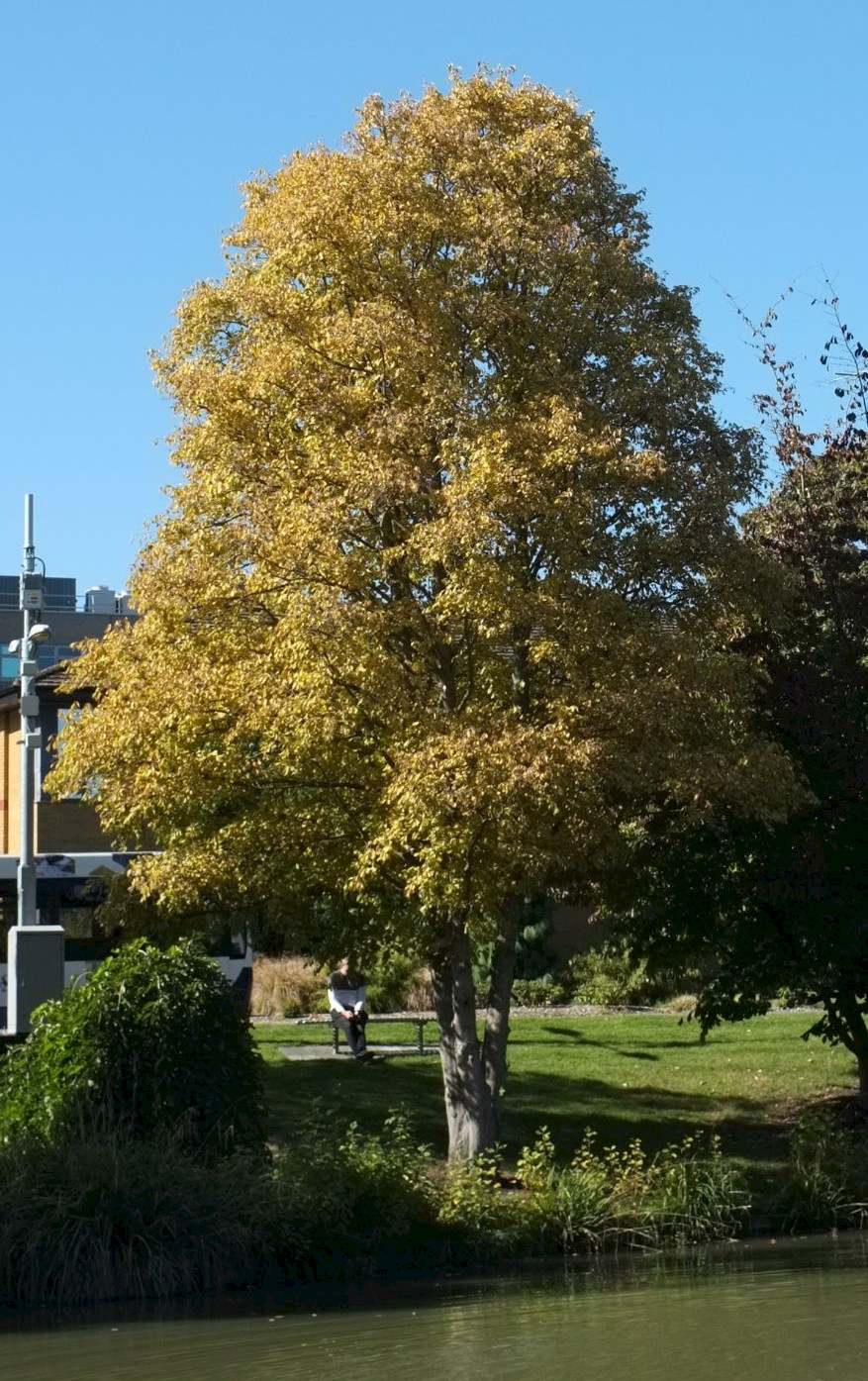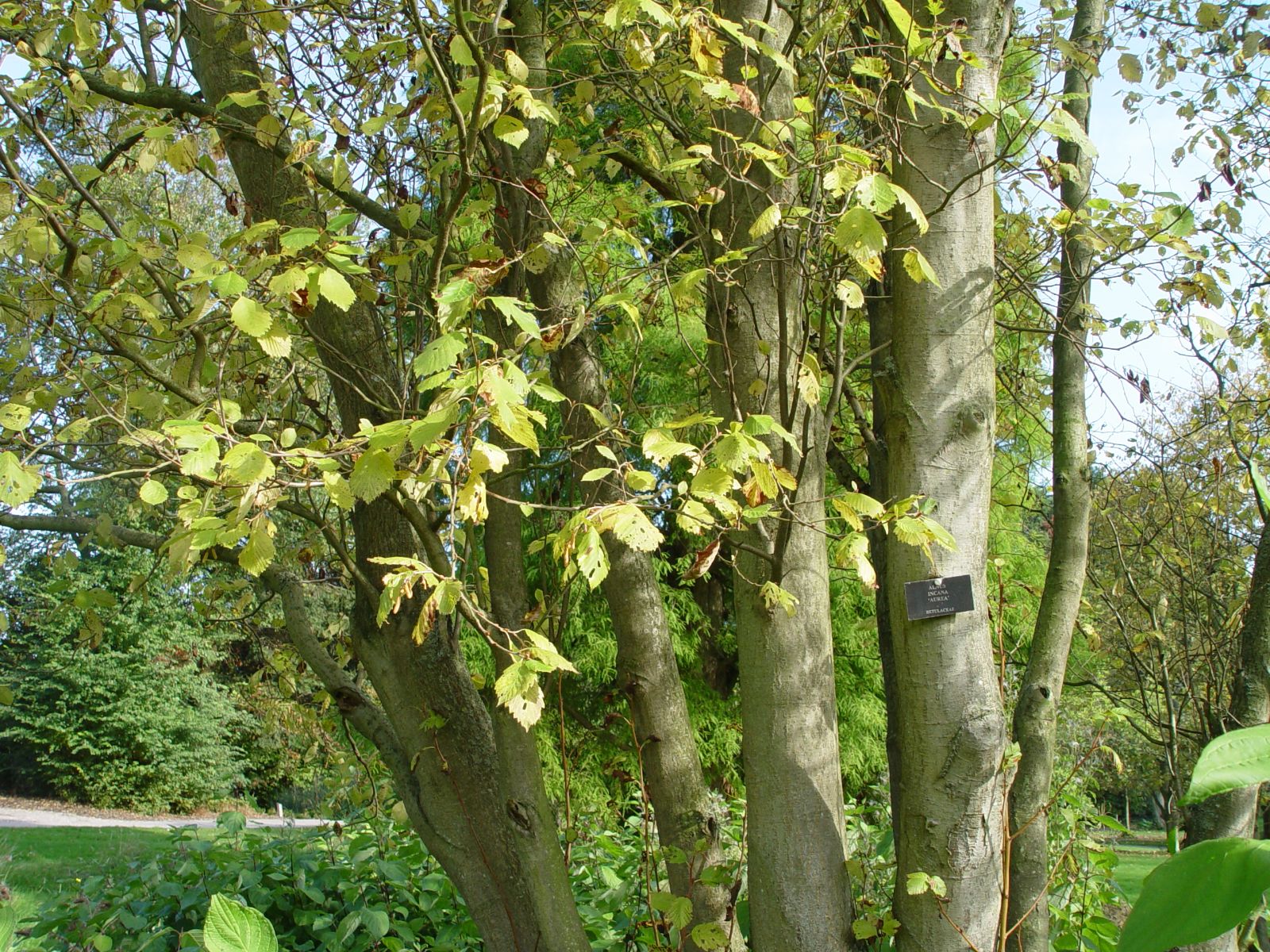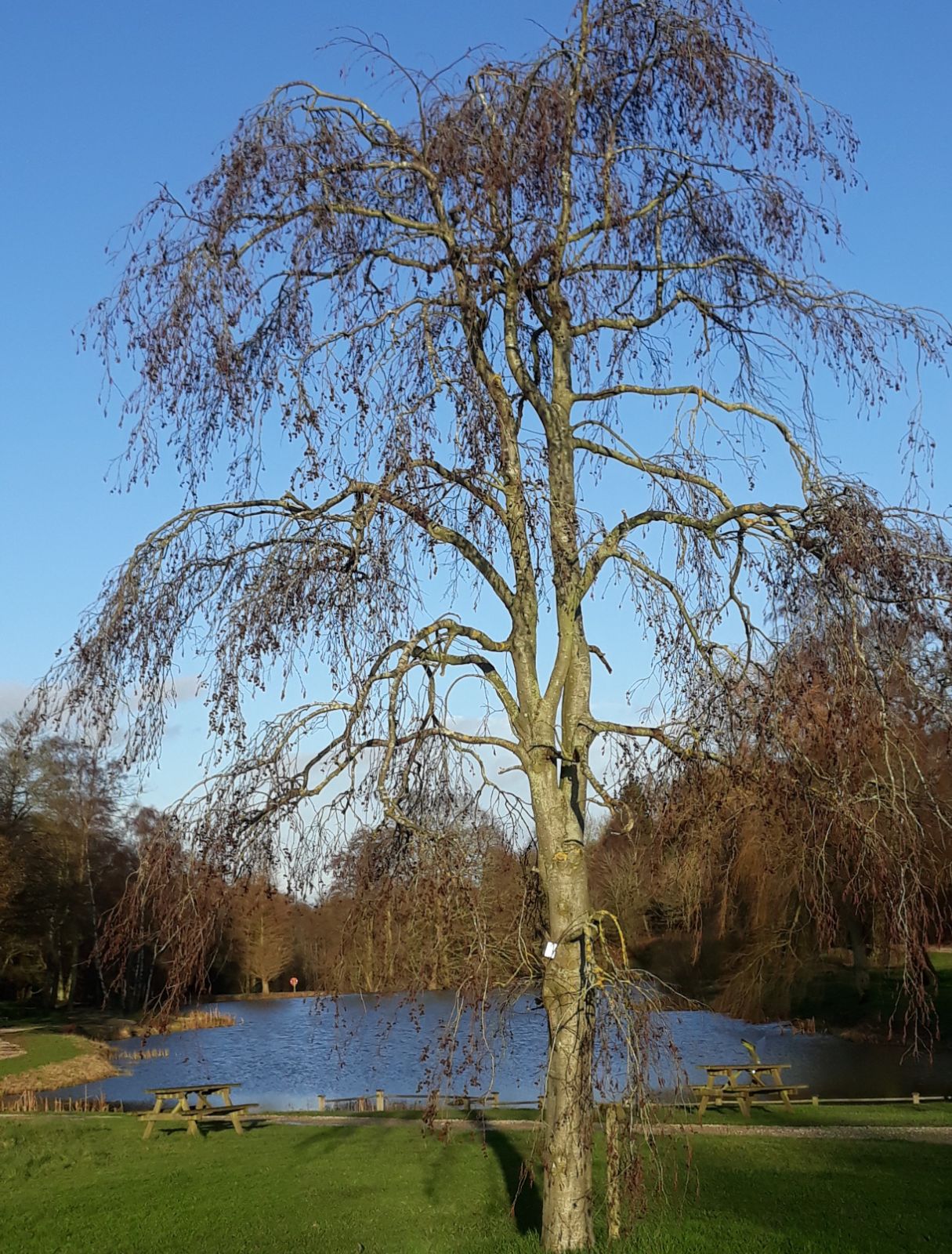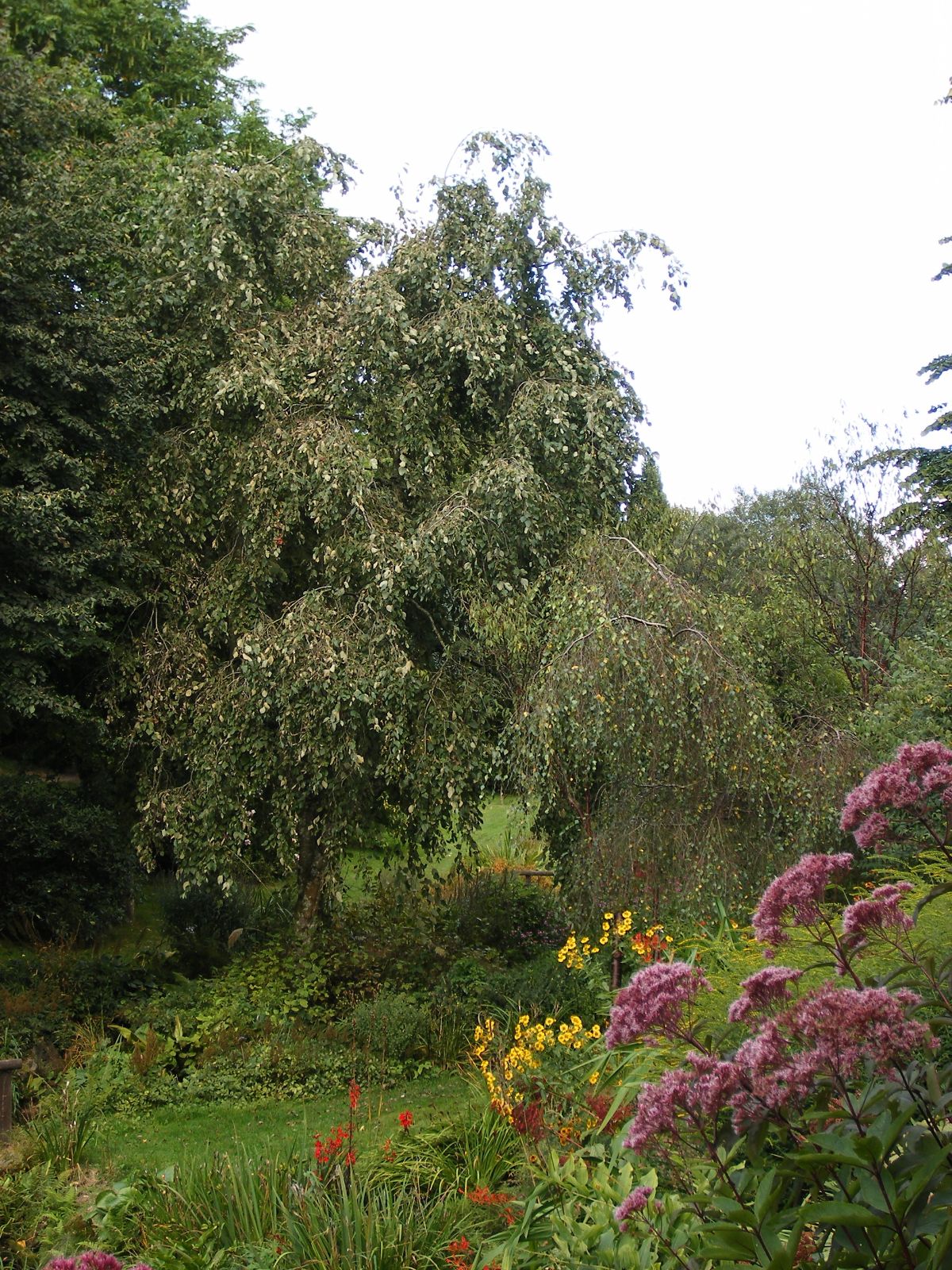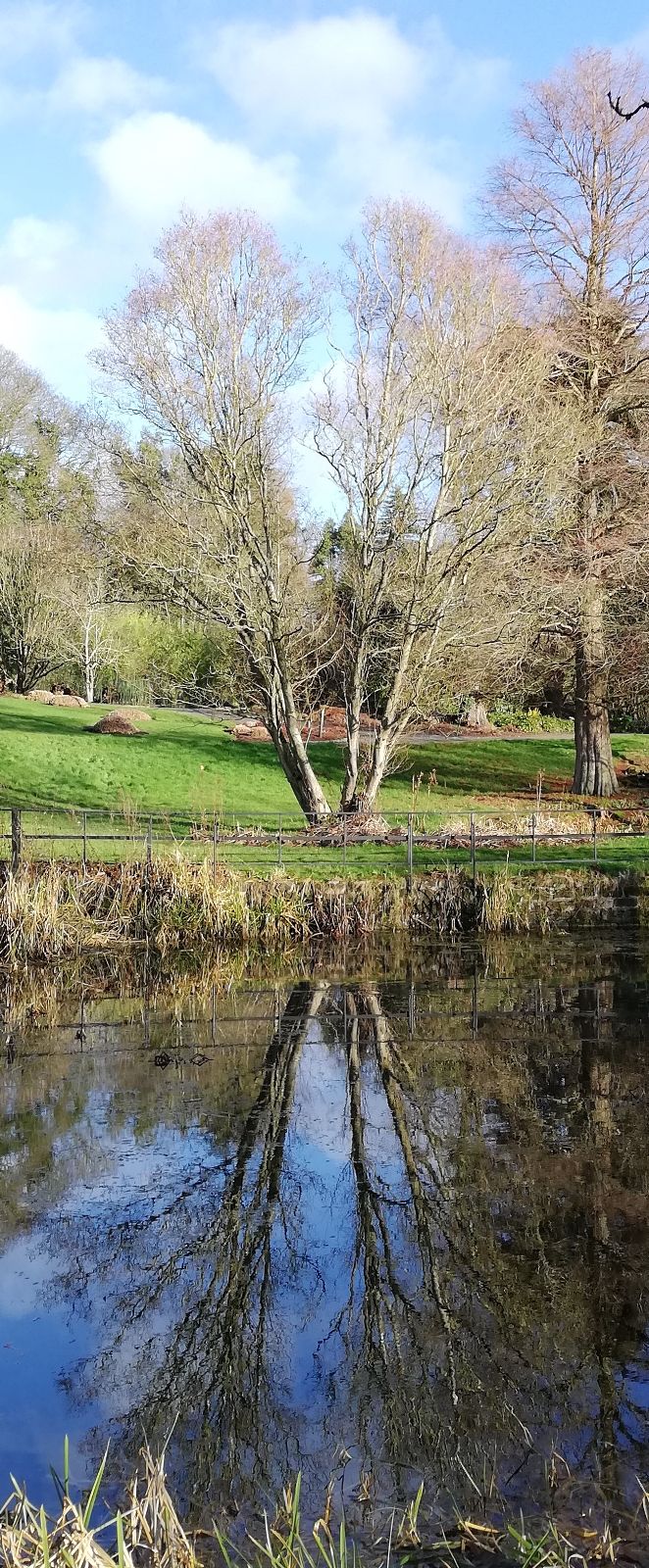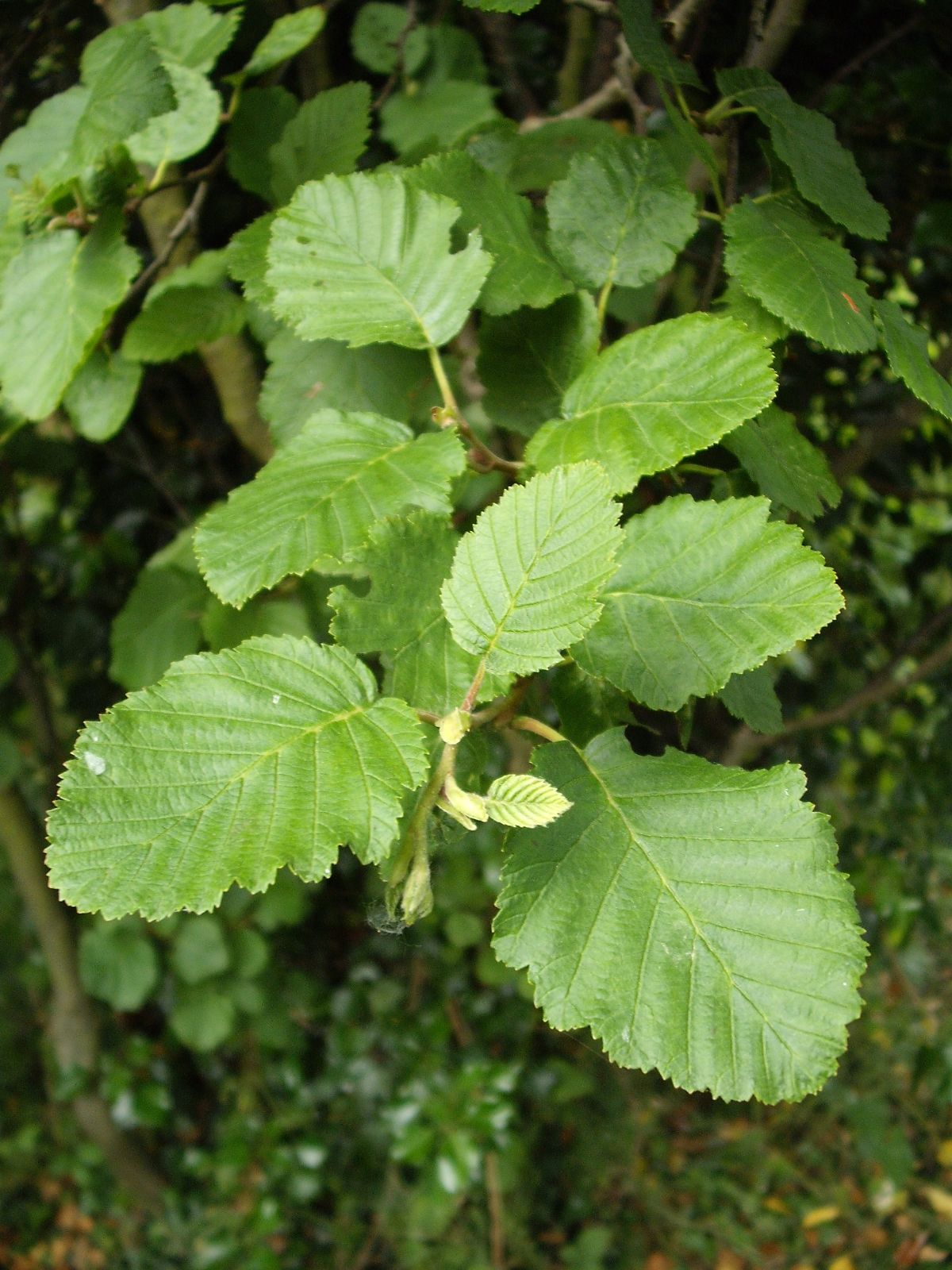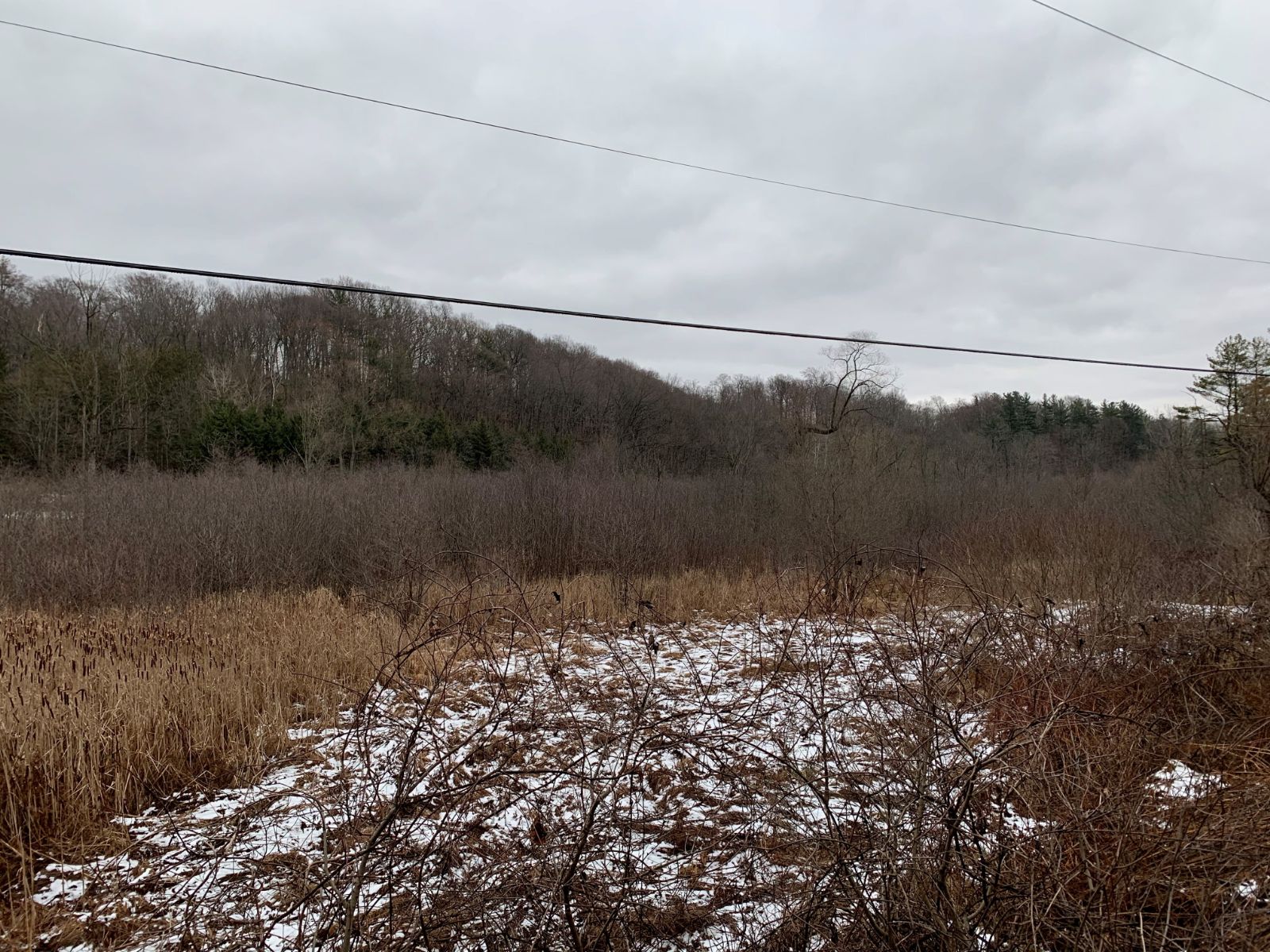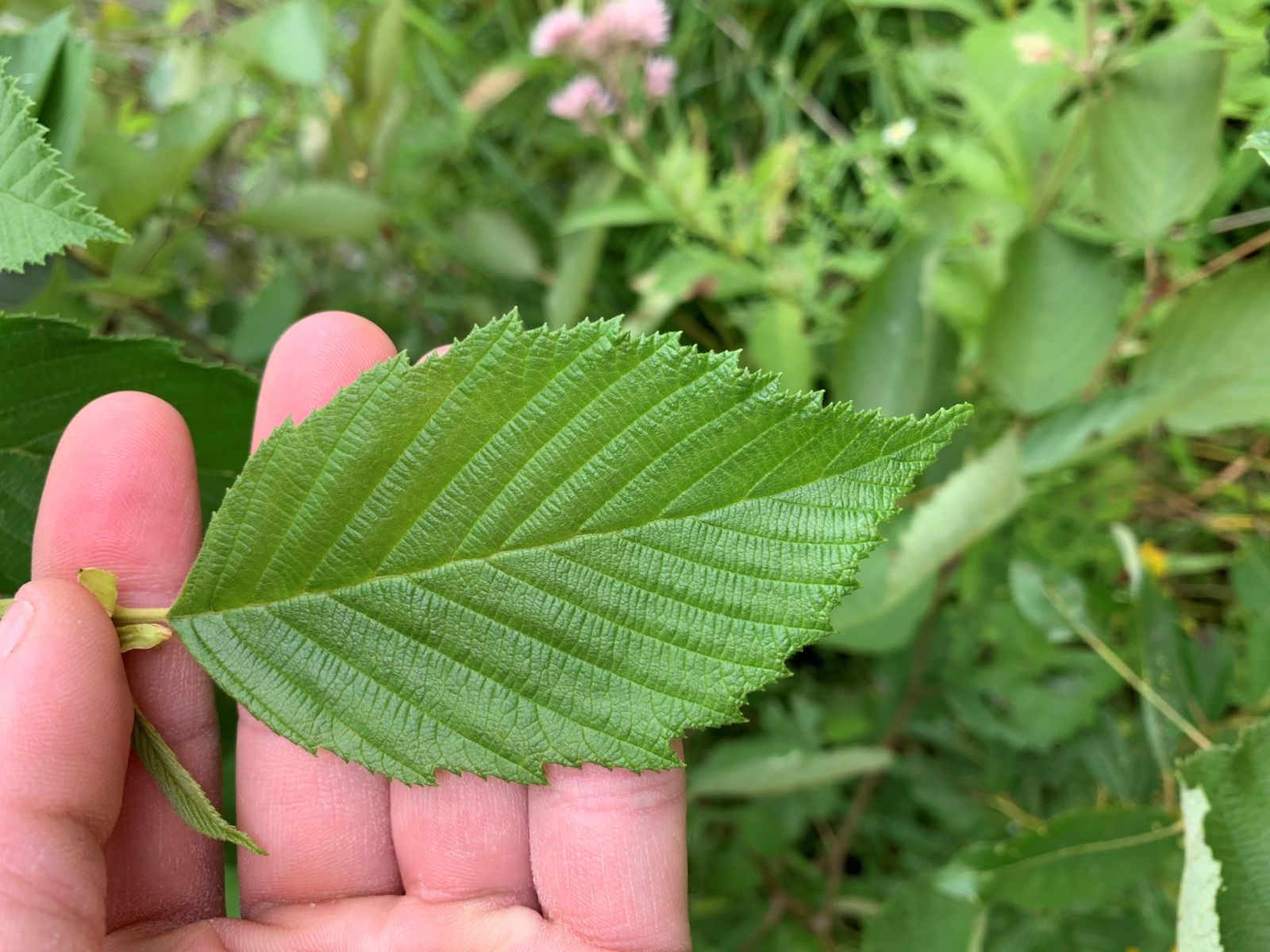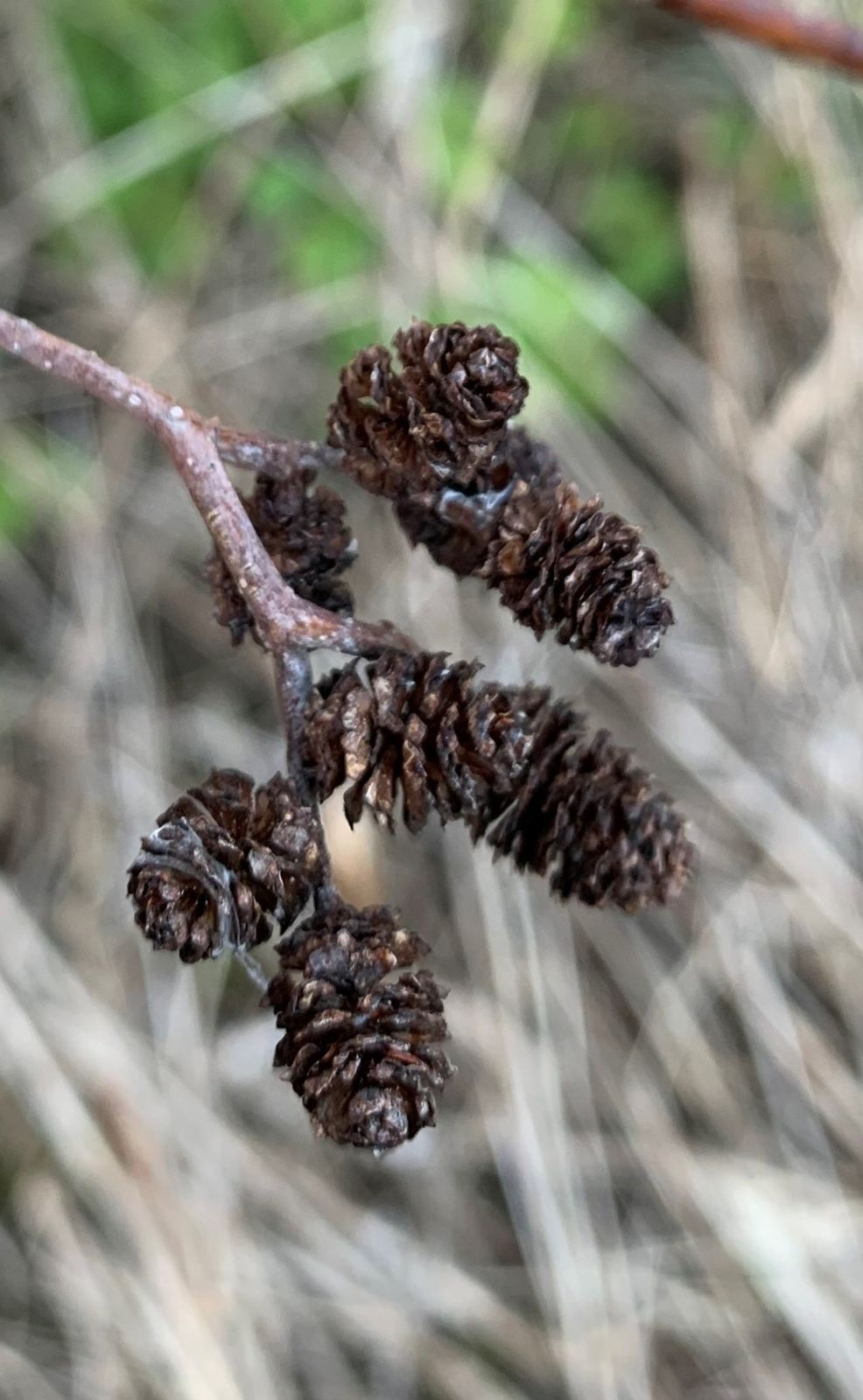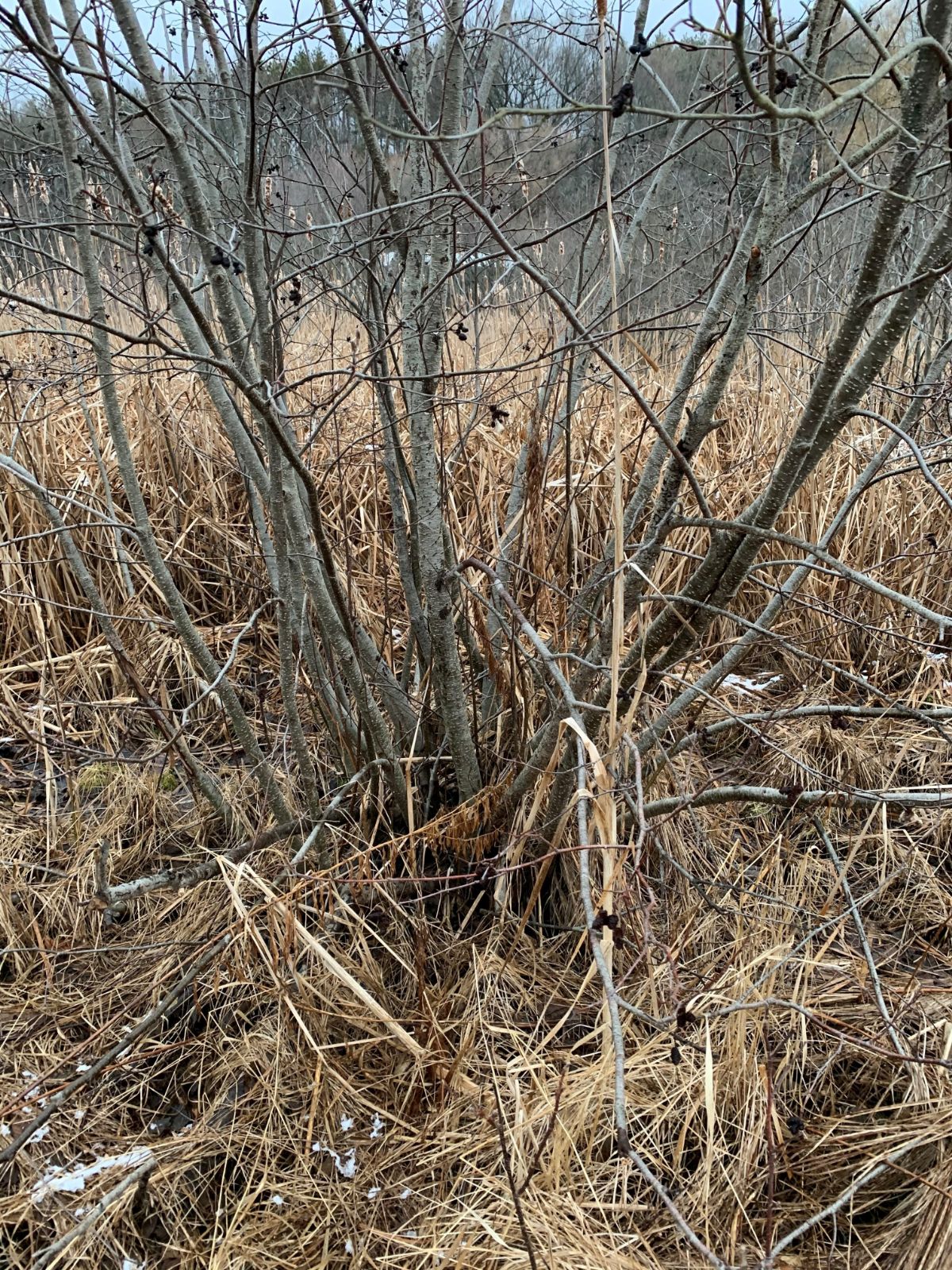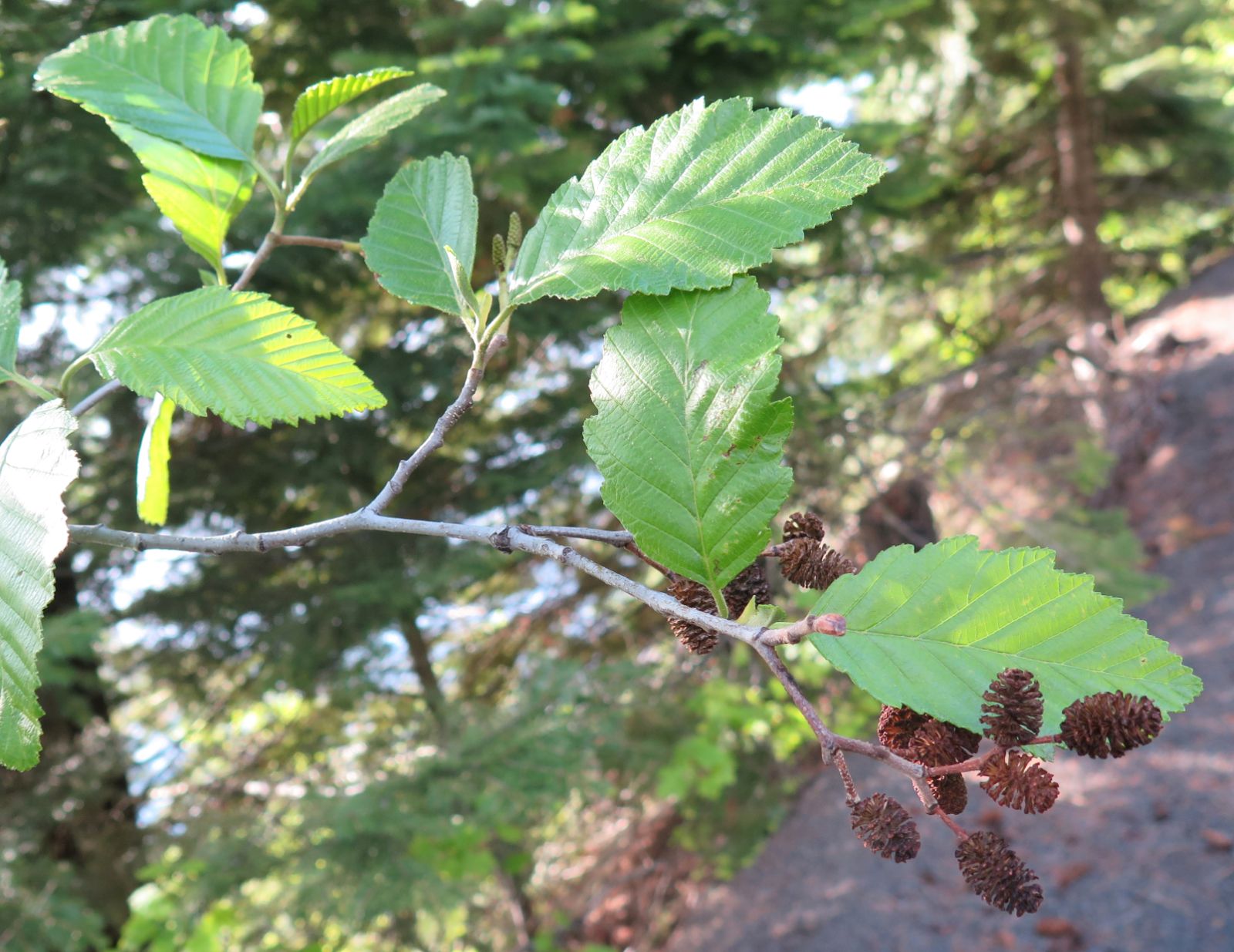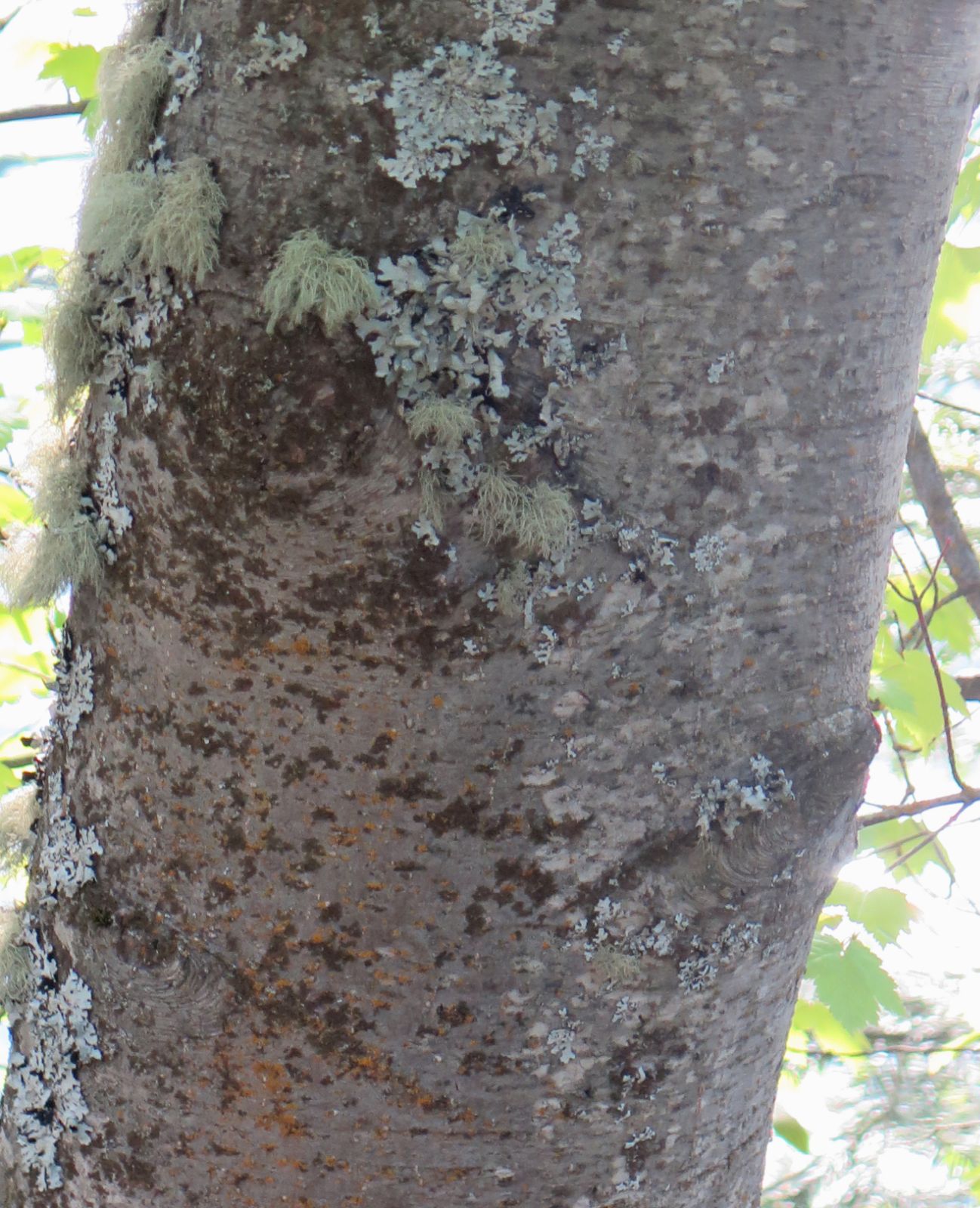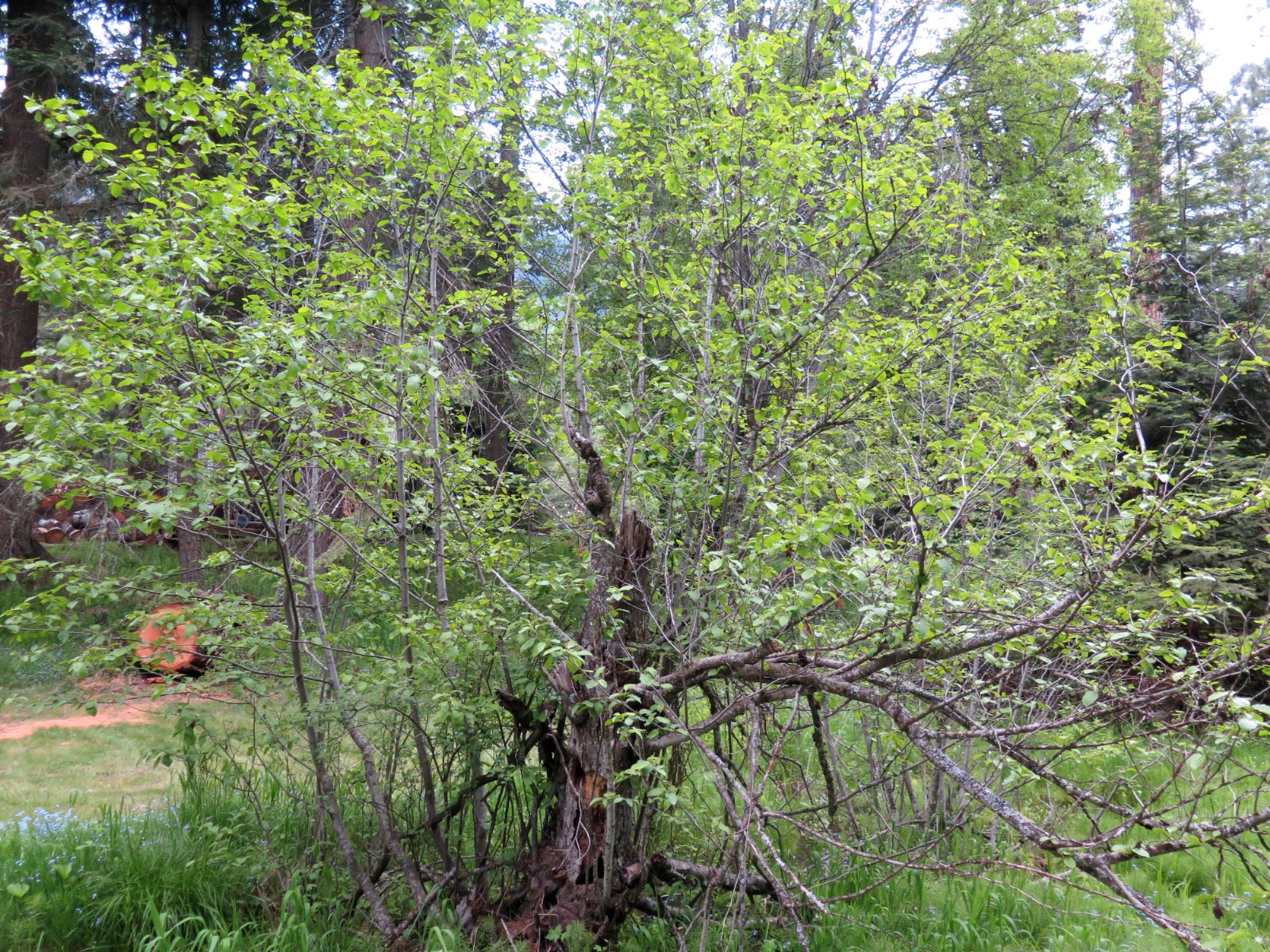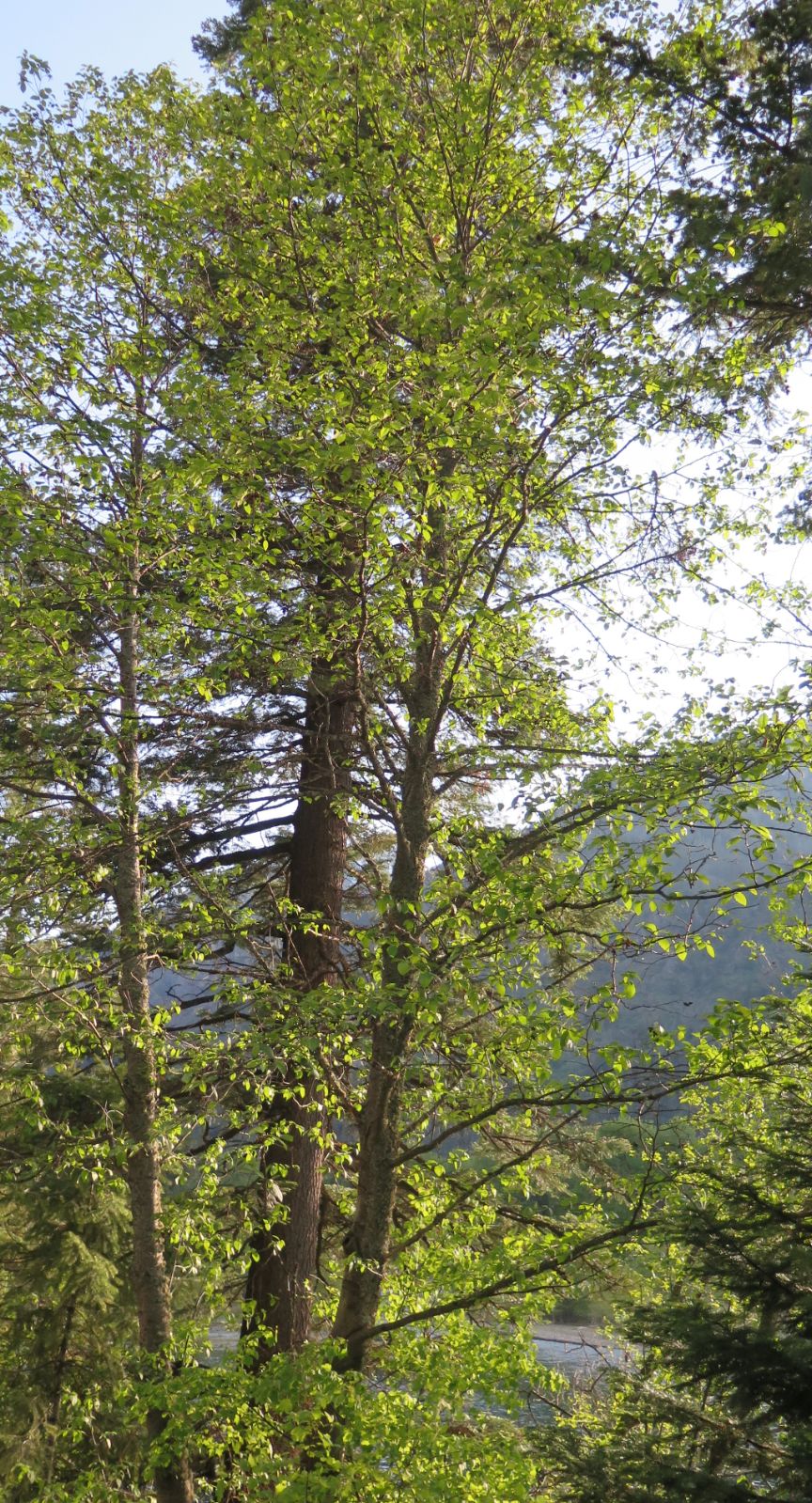Alnus incana
Sponsor
Kindly sponsored by
a member of the International Dendrology Society
Credits
Tim Baxter & Hugh A. McAllister (2024)
Recommended citation
Baxter, T. & McAllister, H.A. (2024), 'Alnus incana' from the website Trees and Shrubs Online (treesandshrubsonline.
Genus
- Alnus
- Subgen. Alnus, Sect. Glutinosae
Common Names
- Grey Alder
Synonyms
- Alnus americana (Regel) Czerep.
- Alnus glauca F. Michx.
- Alnus glutinosa var. incana (L.) Pers.
- Alnus kolaensis N. I. Orlova
- Alnus lanuginosa GILIB.
- Alnus tenuifolia Nutt.
- Betula alnus var. incana L.
Infraspecifics
Other taxa in genus
- Alnus acuminata
- Alnus alnobetula
- Alnus betulifolia
- Alnus cordata
- Alnus cremastogyne
- Alnus djavanshirii
- Alnus dolichocarpa
- Alnus × elliptica
- Alnus × fallacina
- Alnus fauriei
- Alnus ferdinandi-coburgii
- Alnus firma
- Alnus formosana
- Alnus glutinosa
- Alnus hirsuta
- Alnus inokumae
- Alnus japonica
- Alnus jorullensis
- Alnus lanata
- Alnus lusitanica
- Alnus maritima
- Alnus matsumurae
- Alnus × mayrii
- Alnus nepalensis
- Alnus nitida
- Alnus oblongifolia
- Alnus orientalis
- Alnus pendula
- Alnus rhombifolia
- Alnus rohlenae
- Alnus rubra
- Alnus serrulata
- Alnus serrulatoides
- Alnus sieboldiana
- Alnus 'Sipkes'
- Alnus × spaethii
- Alnus subcordata
- Alnus trabeculosa
Tree to 25 m with an open rounded or oval crown, or a shrub to several meters. Bark light to dark grey or yellow, smooth. Young twigs light to dark brown, terete, pubescent to tomentose. Buds ellipsoid, 3–7 mm long, resinous, scales velutinous, stipitate with stalk 2–4 mm long. Leaves ovate to oblong-ovate or elliptic, rarely broadly so, 3–11 × 2–9 cm, apex acute to rounded, base broadly cuneate to acute or obtuse, somewhat coriaceous, adaxially mid-green, abaxially grey-green, margin flat, double-serrate with distinct shallow lobes especially on long shoot leaves, adaxially glabrous to sparsely pubescent, abaxially typically pale yellow tomentose especially along veins, sometimes sparsely so, craspedodromous with 7–14 more or less straight lateral veins either side of midrib with weak tertiary veins. Petiole 8–17 mm, villous to tomentose. Stipules ovate to obovate, 5–10 × 3 mm. Inflorescences formed season before flowering and exposed during winter. Hysteranthous (flowering before leaves unfold). Staminate inflorescences terminal, in pendent racemose clusters of 2–4, held over winter, 1–4 cm in bud, maturing at anthesis to 3–10 cm, 3 per bract. Pistillate inflorescences subtending males, held in racemose groups of 3–6 on short branchlets, erect to pendulous, 2–5 × 2 mm, produced in autumn and maturing in spring. Fruit ovoid to ellipsoid, 10–17 × 8–11 mm on 1 mm peduncles, scales moderately thick and strongly ridged with five even lobes. Seed winged, 2.5 × 2 mm with short persistent divergent styles. Diploid, 2n=28. (Tutin et al. 1972; Furlow 1979; T. Baxter pers. obs.).
Distribution Albania Armenia Austria Azerbaijan Belarus Bosnia and Herzegovina Bulgaria Croatia Czechia Estonia Finland France Georgia Germany Greece Hungary Italy Latvia Liechtenstein Lithuania North Macedonia Moldova Montenegro Netherlands Norway Poland Romania Russia Serbia Slovakia Sweden Switzerland Turkey Ukraine
Habitat Forming dense thickets in damp ground, riparian habitats, bogs and swamps throughout its range, from lowlands to subalpine woods (100–3000 m asl).
USDA Hardiness Zone 2-6
RHS Hardiness Rating H7
Conservation status Least concern (LC)
Alnus incana is a common, fast-growing pioneer species indigenous across large parts of Eurasia and (in two of its varieties) North America. It usually grows into a small rather scrappy tree or large shrub in the wild, and is a common feature of many wet environments across its range, including riparian habitats and bogs, from mountainous areas to floodplains. Typical Grey Alder, A. incana subsp. incana occurs across Europe and into western Siberia. Three further subspecies are described below, namely A. incana subsp. kolaensis (subarctic northeastern Europe); Speckled Alder, A. incana subsp. rugosa (eastern North America); and Thinleaf Alder, A. incana subsp. tenuifolia (western North America).
Alnus incana is similar to several other species and can be tricky to identify, especially from herbarium specimens. It may be readily distinguished from A. hirsuta which has broadly elliptic-obovate to suborbicular leaves, normally glabrous and with larger fruit (typically 2–3 × 1.5–2.5 cm). A. glutinosa has orbicular-obovate leaves with 4–7 pairs of leaf veins and consistently hairy domatia, and has glabrous young twigs and leaves. In leaf shape, A. incana is most similar to A. rubra but can quickly be distinguished by the flat leaf blade and smaller fruit.
Alnus incana is part of a species complex involving several other closely related taxa, including A. hirsuta in north-east Asia and A. oblongifolia in the southwest USA and adjacent parts of Mexico. Morphologically A. incana is closest to A. hirsuta, which is treated here at species rank although it has sometimes been included within A. incana as a subspecies or variety. A. incana is known to hybridise with A. glutinosa where both occur together (Banaev & Bazant 2007). Similarly in North America, where A. incana subsp. rugosa or subsp. tenuifolia occur with other species, they appear to intergrade. This frequent hybridisation and introgression makes an important contribution to the taxonomic complexity of Alnus in southern Europe, the Caucasus, northern Iran and North America. It is not clear what the evolutionary relationships are between this and other closely related species including the A. hirsuta aggregate.
Molecular evidence has added depth but no simplicity to this picture. A genetic study of present-day A. incana populations across Europe suggested that central and northern European populations are not derived from expansion out of glacial refugia in the Carpathians, Balkans or western Russia as might be predicted from work on species such as Picea abies, but rather from a putative refugium in Central Europe (Mandák et al. 2016). As for relationships with other species, Chen & Li (2004) concluded that a clade they refer to as the A. incana complex (comprising the various subspecies of AA. glutinosa, hirsuta and incana, along with AA. inokumae and rubra) showed low sequence divergence in nuclear DNA (ITS region), consistent with recent divergence. Their data suggest that A. incana as used here may be polyphyletic. All chromosome counts for A. incana are diploid (2n=28) apart from a single putative count from Namsskogan, Norway that was tetraploid (2n=56) (McAllister, pers. obs.). Known provenance plants are relatively easy to distinguish, but those of unknown provenance can be exceptionally difficult to identify below species level.
In cultivation, Alnus incana varies from a modest and somewhat scrappy tree to an upright tree capable of reaching 25 m tall. It suckers freely from roots, especially following damage. First introduced to Britain in 1780 it has been widely planted ever since. The type subspecies is not the most attractive of alders but it is a fast growing and useful tree for problem areas with poor wet soils. It is exceptionally cold tolerant and useful in continental climates. A. incana produces copious amounts of seed which in the wild is dispersed by water; it is frequently used as rootstock for its cultivars. It is known to produce plants in the wild and cultivation with dissected or coloured leaves, and such forms are the most common in cultivation. It suffers badly from Alder leaf beetle (Agelastica alni) and is susceptible to Phytophthora alni, which limits its use in collections affected by either organism. The largest trees in UK cultivation include specimens in Leigh Woods, Somerset (25.5 m × 172 cm in 2014) and Hare Hill Garden, Cheshire (23.3 m × 120 cm in 2017 – The Tree Register 2024). A tree at Castlemilk, Dumfries in a group dating from 1928 was measured at 28 m × 130 cm in 1984 (Clarke 1988); by 2009 the largest was only 19 m × 148 cm (The Tree Register 2024). Numerous cultivars exist, with A. incana ‘Aurea’ the most commonly encountered.
'Angustissima'
Synonyms / alternative names
Alnus incana f. angutissima Holmberg
A cut-leaf form of Grey Alder with leaves divided to the midrib or nearly so; the ‘most elegant laciniate form’ for Jablonski (2018). The very narrow lobes are often toothed at the base, with the apex narrowing very gradually into a thread-like point. This form has been cultivated in Sweden since before 1870, having been found growing wild in several parts of Scandinavia (Bean 1976).
'Argentata'
Grown on a very modest scale in Finland, this name covers forms with silver-grey leaves (de Jong 2017).
'Aurea'
Awards
AGM
A useful and widely planted amenity tree, slower and less vigorous tree than the type, growing to 12 m with a 6 m spread, identifiable by the leaves being yellowish, especially when young, and downy beneath. Young bark and shoots orange, remaining so through the winter. Catkins remain on trees all winter and retain attractive orange to pink tones (Jablonski 2018; Edwards & Marshall 2019).
Deje E
Plants marketed in Sweden as Alnus incana Deje E since 2002 are raised from seed gathered from a source near Deje, Sweden. Selected by the Uppsala University of Agriculture (SLU) for their suitability for planting in central and southern Sweden, these plants, probably best regarded as an ecotype or Cultivar Group, are fast-growing with pyramidal crowns to 15 m tall. It is generally more robust and uniform than the typical species, and is particularly tolerant of dry and exposed conditions, including salt exposure (de Jong 2017).
'Elegant'
A slightly weeping tree with laciniate leaves. One of several cultivars originated in an A. incana breeding programme by Arboretum Borova Hora, Zvolen, Slovakia to improve the range of ornamental alders (Jablonski 2018).
'Foliis Aureomarginatis'
Similar to ‘Razzmatazz’ but has glossier leaves with stable yellow variagation, and suffers less from reversion. Originating in Rożińsky, Poland, c. 1913, it was rediscovered in the Korník Arboretum after years of presumed extinction (Jablonski 2018).
'Fruticosa Aurea'
A shrubby plant with golden leaves and reddish catkins, from the breeding programme of Arboretum Borova Hora, Zvolen, Slovakia (Jablonski 2018). The latinized cultivar name is invalid as it was published after 1959; it is not clear whether a new name has been applied.
'Gold Cascade'
Synonyms / alternative names
Alnus incana 'Gold Fountain'
A small tree with golden leaves, prominent reddish buds and catkins, and pendulous habit; from the breeding programme of Arboretum Borova Hora, Zvolen, Slovakia (Jablonski 2018). ‘Gold Fountain’ is virtually identical and probably synonymous.
'Green Fountain'
Upright habit, pendulous branchlets, and a narrow crown; from the breeding programme of Arboretum Borova Hora, Zvolen, Slovakia (Jablonski 2018).
'Laciniata'
Synonyms / alternative names
Alnus incana var. laciniata Gaudin.
Alnus incana f. incisa Dippel
Bean (1976) called this ‘the handsomest of the cut-leaf alders, the blade being pinnately divided into six or eight pairs of narrow, lanceolate, toothed lobes, reaching two-thirds or more of the way to the midrib’. The name has become confused in horticulture and several authors have suggested ‘Pinnata’ is synonymous, but this has much more coarsely divided leaves.
'Monstrosa'
A shrubby selection with fasciated stems and yellow leaves in the spring, turning green later. It was distributed by Späth from 1892 but was considered lost until rediscovered in the Korník Arboretum, Poland (Jablonski 2018). Jablonski notes that it must be grafted deeply on the rootstock.
'Pendula'
Piet de Jong calls this the only weeping form of Alnus incana (as opposed to those forms with merely pendulous branches e.g. ‘Green Fountain’) (de Jong 2017). The main branches spread quite widely in graceful arcs, with secondary branches and branchlets hanging somewhat stiffly from these; given plenty of space it makes a graceful landscape tree. It was raised either in Germany or what is now Poland in the late 19th century (Jablonski 2018).
'Pinnata'
Synonyms / alternative names
Alnus incana f. pinnata (Lundmark) Willd
Largely restricted to Scandinavian collections, and rare in cultivation even here, Alnus incana ‘Pinnata’ was first found in or near Lesjöfors in Värmland, Sweden. It was propagated in the Uppsala Botanic Garden around 1800. ‘Pinnata’ has small leaves with several pairs of blunt, toothed lobes (Bean 1976).
'Ramulis Coccineis'
Synonyms / alternative names
Alnus incana f. coccinea Callier
Very similar to ‘Aurea’, but its leaves are almost glabrous beneath and branchlets and buds a good red. This cultivar comes true from seed (Jablonski 2020). This cultivar and ‘Aurea’ make fine additions to any garden or park.
'Razzmatazz'
Synonyms / alternative names
Alnus glutinosa 'Razzmatazz'
Leaves with irregular bright yellow-green margins in spring; not a spectacular cultivar as the variegation often fades later in the season and trees suffer from reversion; the rediscovered ‘Foliis Aureomarginatis’ is similar and more stable. Originated in the USA some time before 2000; often erroneously listed under A. glutinosa (Jablonski 2018).
'Rubra'
Synonyms / alternative names
Alnus incana f. rubra Palmén (nom. illeg.)
Widely grown in Finland where it probably originated, Alnus incana ‘Rubra’ has leaves strongly flushed purple in the spring, almost resembling the best purple-leaved forms of Corylus avellana. After several weeks these turn dark green (Jablonski 2018; de Jong 2017).
subsp. kolaensis (N.I. Orlova) Á.Löve & D.Löve
Synonyms
Alnus kolaensis N.I. Orlova
Distinguished by its bark which is yellow and translucent, leaves obtuse or shortly acute, glabrous or pubescent on the veins on the lower surface, nutlet wings much wider than the type (c. 1 mm) (Tutin et al. 1964).
Distribution
- Finland
- Norway
- Sweden
Alnus incana subsp. kolaensis is a tree of northernmost Europe, where it is sympatric with the nominate subspecies but restricted to subalpine and arctic regions. Rare in cultivation outside Scandinavia.
subsp. rugosa (Du Roi) R.T. Clausen
Common Names
Speckled Alder
Synonyms
Alnus rugosa (Du Roi) Spreng.
Alnus serrulata var. rugosa (Du Roi) Regel
Betula alnus var. rugosa Du Roi
Betula rugosa (Du Roi) Ehrh.
Large shrub to 9 m; leaves rather thick-textured, only some of them lobed, with major teeth acute (Furlow 1997).
Distribution
- Canada – E
- United States – E
Speckled Alder is variable throughout its range; it is most easily recognised by its thick short-shoot leaves with coarsely double-serrate acute teeth and which are more or less lobulate only on some leaves, unlike other Alnus incana variants that are reliably lobed (n.b. the long-shoot leaves of all A. incana are lobed). The thicker leaf texture distinguishes this taxon from its western cousin, A. incana subsp. tenuifolia. Typical subsp. incana is often a small tree with conspicuously tomentose leaves and shoots which persist until late in the season, while subsp. rugosa becomes more or less glabrous late in the season. Subsp. rugosa intergrades with subsp. tenuifolia in the west of its range and with A. serrulata in the southern part (Furlow 1982). Hybrids with A. serrulata have been treated under Alnus × fallacina Callier; Bean described such material as ‘Clearly intermediate between the two [parents]. Largely distinct and initially close to A. serrulata but distinguished by serrulate leaves slightly lobed and sparsely pubescent, with cones larger’ (Bean 1976).
Speckled Alder is a plant of some ornamental merit and very useful in wet conditions. The largest plant ever recorded in the UK was 15 m tall (1967); it grew at the Royal Botanic Garden Edinburgh (Tree Register 2021).
subsp. tenuifolia (Nutt.) Breitung
Common Names
Thin-leaved Alder
Synonyms
Alnus tenuifolia Nutt.
Alnus tenuifolia var. occidentalis Callier
Alnus tenuifolia var. virescens (Kuntze) Callier
Shrub or tree to 12 m; leaves thin and papery, glabrous or only sparsely pubescent beneath, teeth blunt (Furlow 1997).
Distribution
- Canada – West
- Mexico – far north (unconfirmed but probable)
- United States – West
Thin-leaved Alder is a large shrub or small tree common throughout the western part of North America, from Alaska in the north to California and New Mexico in the south (possibly extending into northern Mexico). It is primarily a mountain species of stream sides, wet fields and meadows, lake edges and moist slopes from about near sea level in the northern part of its range to over 3000 m in Colorado and Arizona (Furlow 1979).
It is distinguished by its thin-textured leaves with larger and more rounded teeth than other A. incana. Its leaves and twigs are more sparsely hairy than the type. It could also be confused in the wild with the sympatric A. oblongifolia and A. rhombifolia, but the buds are more rounded and completely covered in bud scales in A. incana which has stamens and perianth parts in fours and the stamens are shorter than the perianth.
It makes an attractive small tree or large shrub. It is not uncommon in cultivation but remains less frequently planted than the type. It is suitable for wet ground, especially at altitude. In Britain, two trees measured at 12 m in 2013 grow at Blagdon Hall, Northumberland, while a 4.5 m × 94 cm specimen at Borde Hill, W Sussex, blew down around 1945 (The Tree Register 2024).
'Varjo'
An unusual selection growing much broader than tall; established plants can reach 3–4 × 8–10 m. Raised in Finland, it is barely cultivated outside that country (Jablonski 2018).
'Wonderful Fountain'
Resembling ‘Green Fountain’ in habit but with deeply cut leaves with narrow, toothed lobes; from the breeding programme of Arboretum Borova Hora, Zvolen, Slovakia (Jablonski 2018).

